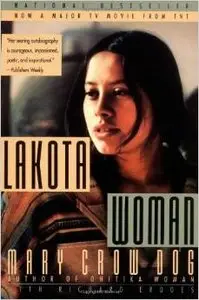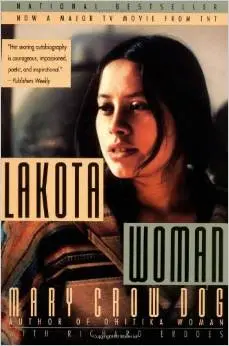Lakota Woman by Mary Crow Dog
English | Mar 28, 1991 | ISBN: 0060973897 | 287 Pages | PDF | 11.8 MB
English | Mar 28, 1991 | ISBN: 0060973897 | 287 Pages | PDF | 11.8 MB
A unique autobiography unparalleled in American Indian literature, and a deeply moving account of a woman's triumphant struggle to survive in a hostile world.
From Publishers Weekly
Mary Brave Bird gave birth to a son during the 71-day siege of Wounded Knee in 1973, which ended with a bloody assault by U.S. marshalls and police. Seventeen years old at the time, she married fellow activist Leonard Crow Dog, medicine man and spiritual leader of the American Indian Movement (AIM). Written with Erdoes ( Lame Deer ; Seeker of Visions ), her searing autobiography is courageous, impassioned, poetic and inspirational. Her girlhood, a vicious circle of drinking and fighting, was marked by poverty, racism and a rape at 14. She ran away from a coldly impersonal boarding school run by nuns where, she reports, Indian students were beaten to induce them to give up native customs and speech. The authors write of AIM's infiltration by FBI agents, of Mary Crow Dog helping her husband endure prison, of Indian males' macho attitudes. The book also describes AIM's renewal of spirituality as manifested in sweat lodges, peyote ceremonies, sacred songs and the Ghost Dance ritual.
From School Library Journal
Mary Crow Dog narrates the story of her youth in this anguished account of growing up Indian in America. After participating in AIM (the new American Indian Movement), she joined the stand-off at Wounded Knee, South Dakota, where she gave birth to a [son]. Her marriage to Leonard Crow Dog, a medicine man who revived the sacred Ghost Dance, was a learning experience for her; she was assimilated into his family. Short, choppy sentences impart a sense that Mary Crow Dog is speaking directly to readers, and her story is startling in its intensity of feeling and its directness about the Indians' reliance on their heritage and religion. A unique account of a way of life unknown to most Americans, this pulls readers in and holds them. By no means a pretty account–the author is graphic in her accounts of drunkenness, lawlessness, killings, and drug use–the book is an important bridge to cultural understanding, and a volume that should be in every library.



